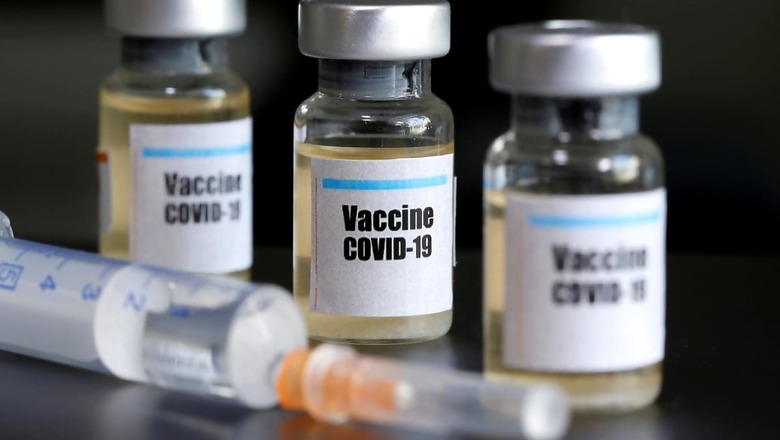
views
At 85 lakh inoculations, the centralised free vaccination policy that began on Monday resulted in unprecedented number of jabs in a day. However, questions on its sustainability, given the number of manufacturers in India, remain crucial.
Here are other key issues that may require addressing:
How did the numbers suddenly shoot up?
There has been a change in India’s vaccine policy.
Under the previous Covid-19 vaccine policy, half of all vaccines produced in India went to the federal government, and the rest were sent to state administrations and private hospitals.
Under the new policy, the federal government will now buy 75 per cent of all vaccines manufactured.
The state governments will receive their vaccines doses for free from the federal government, instead of negotiating directly with manufacturers.
However, it’s worth noting that the remaining 25 per cent of vaccines are still set aside for procurement by private hospitals as before.
How will that help in more inoculations?
The policy directly translates into state governments receiving their allocated vaccine doses from the federal government based on the population of those states, the level of disease, vaccination progress and vaccine wastage.
That relieves the state authorities of having to purchase doses from the manufacturer at higher prices than were offered to the federal government.
Can the spiked numbers be sustained? Will there be new vaccines in the market soon?
The Union government is aiming to administer one crore coronavirus vaccine doses daily from August and advance orders of nearly 100 crore vaccines are being placed this month so that supplies could start coming in batches from August.
The monthly production of indigenously developed coronavirus vaccine Covaxin will be increased to 6-7 crore doses in July-August from one crore doses in April, the Union Health Ministry said last month.
To add ammo to the fight, the Union Ministry of Health finalised advance arrangement for 30 crore Covid-19 vaccine doses with Hyderabad-based M/s Biological-E Ltd last month.
Zydus Cadila, the Ahmedabad-based pharmaceutical company has been authorised to provide its ZyCoV-D COVID vaccine. The company is expected to provide 5 crore doses by year-end.
The Centre has also given approval to the Pune-based Gennova Biopharmaceuticals to provide vaccine doses against COVID-19. Gennova will be providing 6 crore doses.
SII’s launch of its Novavax version, named Covovax, is likely to happen after the global launch in September this year.
The government is also expecting 75 crore doses of Covishield in the five-month period. The vaccine lot will have about 15.6 crore doses of Russia’s Sputnik V.
Will this help fend off the third wave? What is the math behind it?
Last month, IIT-Delhi warned the national capital to be prepared for a worst-case scenario where 45,000 Coronavirus infections might be reported daily with 9,000 patients needing hospitalization in the third covid-19 wave.
“Vaccine coverage of the population is a critical issue, but in India, the numbers are so huge that a mere 30-40 percent of the population being covered may not be enough to contain the virus. Earlier, it was thought that 60-70 percent population coverage would work, but now it seems, 85-90 percent of the population needs to be covered,” Gagandeep Kang, microbiologist and virologist, told Moneycontrol.
As per data on June 20, 22.87 crore have been partially vaccinated and 5.12 crore are fully vaccinated with both doses which means India has 28 crore people either fully or partially vaccinated. That means the country has to vaccinate around 66.02 crore people more. As many as 66.02 crore people means 66.02 crore vaccine doses for partial and 132.04 crore vaccine doses for complete Covid vaccination. Now if the country manages to vaccinate 75 lakh people per day, it would take 88 days to partially vaccinate the entire adult population.
The problem, however, lies in the fact that even India manages to partially inoculate the entire adult population in three months, experts are of the opinion that the third wave may strike sooner.
When is the third wave expected?
AIIMS Director Dr Randeep Guleria on Saturday warned that if Covid-appropriate behaviour is not followed and crowding not prevented, the next wave of the viral infection could strike the country in the next six to eight weeks.
A snap survey was recently conducted by Reuters between June 3-17 wherein 40 specialists, including doctors, scientists, virologists, epidemiologists and professors from around the world, were asked when they expected the third wave to hit.
Over 85 per cent of the survey respondents, or 21 of 24, said the next wave will hit by October, including three experts who predicted that the pandemic may hit again as early as August, while another 12 said it is likely to strike in September. The remaining three experts said the third wave may come between November and February.
Read all the Latest News, Breaking News and Coronavirus News here.




















Comments
0 comment